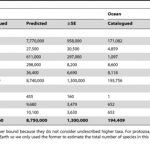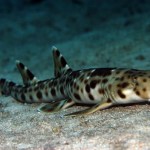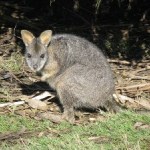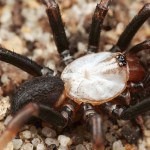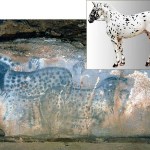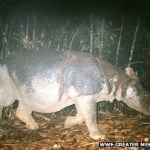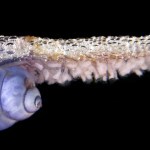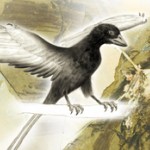
Good news for those interested in discovering new species. Researchers have used taxonomic data to estimate the total number of species in a taxonomic group. Using this information, they have determined that there are approximately 8.7 million species of eukaryotes around the world. Of those, about 2.2 million live in the ocean. These findings mean that roughly 86% of species on Earth and 91% of those in the ocean have yet to be discovered!
Click on the table to see a higher resolution image.
Source:
Mora C, Tittensor DP, Adl S, Simpson AGB, Worm B, 2011 How Many Species Are There on Earth…
In our continuing coverage of just how neat these animals are, check out this video showing an octopus taking a stroll on the beach at the Fitzgerald Marine Reserve in Moss Beach, California.
Video: Octopus Walks on Land
Here is another video of the super stealthy mimic octopus:
Video: Super Stealth OctopusI just love these animals!
For those unable to view the previous video explaining the evolution of turkeys from dinosaurs, or would rather see a synopsis, here is a short YouTube clip:
Happy Thanksgiving!
Here is a neat special from National Geographic showing the evolution of turkeys from dinosaurs:
Happy Thanksgiving everyone!
-Dr. Dolittle
A new species of walking epaulette sharks (Hemiscyillum freycineti) has been discovered off the coast of Indonesia. These sharks actually walk using their pectoral fins. Take time out for a dive alongside this shark and see some other amazing ocean wildlife in this diver's video:
Video Source: Conservation International.
As if walking is not interesting enough, another species of epaulette sharks (Hemiscyllium ocellatum) are actually resistant to hypoxia (low oxygen), which is important if you are living in an environment wherein the oxygen concentrations can vary dramatically (Wise et al., J…
Photo Credit: H. Jusseit
Hans Jusseit, a tuna fisherman, has designed a shield to protect the bait on fish hooks (image above). These are not just any fish hooks. These hooks are for catching large fish, like tuna, using longlines like the one shown in the picture below.
Image: OPRT-Organization for the Promotion of Responsible Tuna Fisheries
One problem with this type of fishing is that hundreds of thousands of seabirds and endangered sea turtles, along with other "bycatch" like sharks and porpoises, get caught on the hooks and die while trying to get to the bait. According to a recent…
Photo: An adult tammar wallaby. (Andrew Pask/UConn Photo)
The tammar wallaby is the first Australian marsupial to have its genome sequenced. Researchers were surprised to find out that many of the wallaby genes are similar to those found in humans. Because baby wallabies (aka: joey) develop in a pouch outside the mother's body it is easier to study mammalian development in these animals. Having the genome sequence just makes that research as well as other research on the animals that much more informative. I was surprised to learn how well the wallaby sense of smell is. The baby wallabies…
The last stop on our trail of physiology this Fall is Arizona. The Arizona Physiological Society held their annual meeting on the Medical Campus of the University of Arizona in Tucson on November 11-12.
The meeting opened with a special session for future (and current) physiologists interested in careers outside of academia. With academic jobs being so hard to come by, it is great that this chapter is supporting future scientists by suggesting alternate career options.
Dr. Douglas C. Eaton, from Emory University School of Medicine in Atlanta, presented the Keynote Lecture for the meeting…
These are just a few of my favorite recent discoveries.
A new species of "albino" trapdoor spiders has been discovered in Australia. The aptly named spiders build trapdoors hinged with silk leading into their burrows. When prey walk by, the spiders sense the vibrations and spring out for the attack.
Photo Credit: Volker W. Framenau
This past summer half a dozen new fish species were discovered off the coast of Curacao in the Caribbean. My personal favorite is the deep sea toadfish shown below. You can see some of the other new species here.
Photo Credit: Barry B. Brown, Washington Post.…
Image:Canadian Museum of Nature
Well, the paternity tests are in and the results are not looking very good. It turns out that arctic foxes are not monogamous after all. When resources are abundant, populations of breeding pairs expand and the female arctic foxes mate with other males, cheating on their partner. In fact, researchers have found that with abundant food (in this case geese) up to 31% of the pups in a population were the result of extra-pair relations. They hypothesize this genetic flow is important for maintaining genetic diversity.
Source:
C Camerona, D Berteauxa, F Dufresneb…
Image Credit: Science Magazine; The Bridgeman Art Library/Getty Images; Thomas Hackmann (insert). 25,000 year old cave paintings in Spain.
Until now, scientists thought that the spotted horses depicted in ancient cave paintings, like the image above, were works of imagination and that this leopard pattern did not exist until horses were domesticated about 5000 years ago (inset). Researchers have now discovered that the spotted phenotype did in fact exist when the cave paintings were created. This means that the artists were indeed depicting real-life and not fantastical creatures.
Sources…
Dr. Jon Costanzo, Senior Research Scholar and Adjunct Professor in the Department of Zoology at Miami University in Oxford, OH was invited to tell us about his amazing research on wood frogs; animals that can actually survive freezing! Here is his post:
In a recent post, Dr. Dolittle commented on our poster.pdf presented at the Ohio Physiological Society's meeting in Cincinnati, Ohio. We reported on seasonal variation in the abundance of proteins within the liver of the wood frog (Rana sylvatica), the most cold adapted of all North American amphibians. The wood frog is one of about a dozen…
Photo Credit: A chestnut-backed chickadee from San Francisco, 2008 Greg Cope
Scientists at San Francisco State University, in collaboration with researchers from PRBO Conservation Science, have discovered that birds in central California are bulking up. Not only are they gaining weight, but their wingspans have also increased over the last few decades. The suspect in this alteration is climate change.
According to Bergmann's Rule, animals at higher latitudes tend to be larger. This may be due to their ability to store fat for protection in cold weather. Therefore, some scientists predicted…
The last known Javan rhinoceros from the subspecies Rhinoceros sondaicus annamiticus was found dead in Vietnam with its horn cut off, most likely a victim of poachers. Another subspecies, The Indian Javan rhino (R. sondaicus inermis), is believed to have gone extinct in the early 20th century.
With only about 50 members left from the Indonesian subspecies, R. sondaicus sondaicus, in West Java, the outlook for these animals is bleak.
Sources:
BBC News
CP Groves, DM Leslie. Rhinoceros sondaicus (Perissodactyla: Rhinocerotidae). Mammalian Species, 43(1):190-208. 2011.
Ramono, W., Isnan, M. W…
I just love watching Animal Planet! Here is a must-see video of just what Lucky does all day when her owners are away.
What could be more spooky than the idea of something sucking your blood while you are sleeping? Movies, TV shows and books about vampires abound these days. So what do some bats have in common with Dracula? The need to survive on blood alone.
Vampire bats feed mainly off of livestock but have increasingly been feasting on humans. Besides being downright creepy, the big problem is that they are vectors for spreading rabies:
So how do vampire bats find food? They are certainly better at finding veins to draw blood from than a phlebotomist-in-training. In fact, you can probably call them…
This kayaker was having fun tracking humpback whales off the coast of California when the whales breached the water right next to him. What an amazing photo and experience!
Visit msnbc.com for breaking news, world news, and news about the economy
The Tennessee Physiological Society held their annual meeting October 13-14 at East Tennessee State University (ETSU) in Johnson City, Tennessee. The meeting opened with a seminar by Dr. David L. Williams from the Department of Surgery at Quillen College of Medicine, ETSU. He spoke about how the macrophage scavenger receptor A, previously thought of as just as cholesterol receptor, has now been found to play important roles in the response to septic shock, normal immune responses, oxidative stress and ischemia/reperfusion injuries. Dr. William's research focus is on the pathology of sepsis.…
If you look up snail surfing on YouTube, you come up with some fun videos of snails riding leaves:
Or floating in pairs:
But there are no videos showing snails surfing by making rafts out of bubbles...at least that I could find. The violet snail (Janthina exigua), creates these rafts not only for floating, but also to store eggs and as platforms for young snails. They create these bubbles from a mucus that they secrete from their feet-muscular organs. The consistency of the bubble rafts is similar to bubble wrap. To find out how these snails evolved this peculiar habit, and to see more…
Image Credit: The Scientist; R. Hartley, Univ of Manchester; T. Larson, Black Hills Inst.; G. Stewart; SLAC National Accelerator Laboratory
I just read the neatest article in Science Magazine on how a team led by researchers from the University of Manchester has re-created the pigmentation of fossilized birds like the artist's rendition of the extinct C. sanctus above. They accomplished this by mapping possible chemical residues of melanin pigments using synchrotron x-rays. The researchers believe that trace metals found in the fossils, such as copper, calcium and iron, may be chemical…
